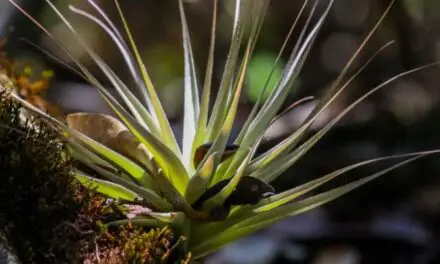Whether you live in the desert or just watch old Western movies from time to time, you’ve probably seen some pretty large cactus plants before.
Some cacti can be absolutely massive and reach heights of 60 plus feet.
And given their massive size, you’d be forgiven for mistaking some species of cacti for trees.
Table of Contents
Is A Cactus A Tree?
A cactus is not a tree. Cactus plants belong to the plant family Cactaceae and do not have wooden stems as trees do. Cactus plants can grow to be as large as some trees but they have succulent stems and cannot be classified as trees.
What Makes Cactus Plants Different From Trees?

Cacti are exotic desert plants with over 127 genera and more than 1,800 species from the Cactaceae, or cactus family.
They can grow as tall as 62 feet or be as tiny as one centimeter high.
Wind, birds, bees, and other insects pollinate their bright and vibrant flowers and these exotic desert plants can live for more than 100 years.
The main identifying features of a cactus is its little spines or bumps on their stems, also known as areoles.
Related Article: Are Cactus Spines Poisonous?
Even though it’s very common for cacti to have these, not all of them do.
These textured appendages have three main purposes:
- They protect the plant from destruction by other animals.
- Areoles act as insulation during drought and drier seasons.
- They provide shade during hotter temperatures, keeping leaves and stems juicy.
Cacti Are Succulents
The juicy, thick leaves storing massive water reserves is what classifies a succulent.
They don’t need a lot of water but cacti can definitely hold a lot of water.
Cactus plants grow in many places all over the world and love dry, arid environments.
Many species inhabit the Americas and the Caribbean.
The variety in species of the cactus family also helps to see how they aren’t trees.
The Saguaro Cactus, for example, grows super big and gives the appearance of a tree.
But other species, like Prickly Pear, Peyote, and Barrel Cactus are much smaller with plumper spines and do not look like trees at all.
The Different Characteristics Of Cacti And Trees
What also distinguishes cacti from trees is the presence of epiphytes.
Epiphytes are non-parasitic plants that can grow out of trees.
They develop on a tree’s woody parts but receive nourishment and sunlight of their own accord.
Cacti don’t have epiphytes, although they can take on this role.
A cactus can be ephiphytic to a tree but you won’t see a tree as an ephiphyte on a cactus.
The waxy surface of a cactus contributes to its ability to keep and hold water, thereby preventing moisture from evaporating.
Trees do not hold nearly as much water as cactus plants.
They release and pull moisture from the ground by their roots and absorb it through their leaves.
Cacti And Trees Photosynthesize Differently
The way cacti and trees photosynthesize take on different activities to serve the same purpose.
The word “photosynthesis” in Greek stands for “putting together with light.”
All plants use this cellular process in the production of chlorophyll.
What chlorophyll is to plants is the same as what blood is to humans.
During photosynthesis, the water absorbed by the plant comes into contact with the chlorophyll.
Carbon-dioxide rich air is simultaneously taken into the leaves and then exposed to sunlight.
Water breaks down into a release of nitrogen and oxygen combining with carbon dioxide into glucose, or sugar.
When plants release oxygen, it becomes the air humans and animals breathe.
Cacti photosynthesize through their thick, waxy skin, whereas trees do it through their greenery.
Trees achieve photosynthesis by absorbing nutrients and moisture through their intricate root system embedded into the earth.
A cactus absorbs carbon dioxide at nighttime that’s then expended during the day.
In simpler terms, this plant breathes at night while holding its breath during the day.
Doing this contributes to how a cactus conserves water.
A Cactus Is Not A Tree
As you can see, a cactus is a succulent plant and not a tree.
But it’s understandable why some people might think why a cactus might be a tree because of how tall and towering they can be.
Not only do cacti differ from trees by their basic botanical makeup, but they also perform different photosynthesis methods.




